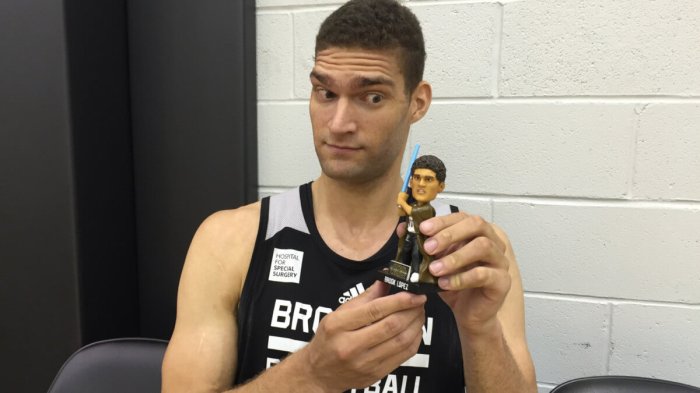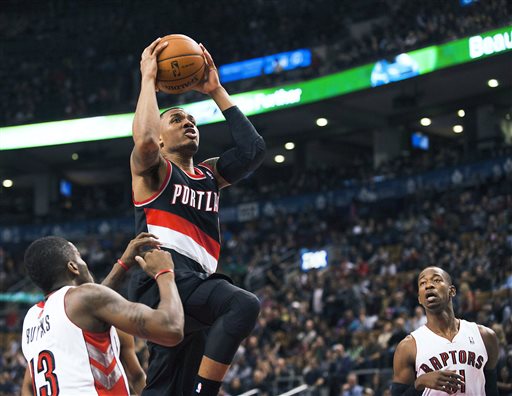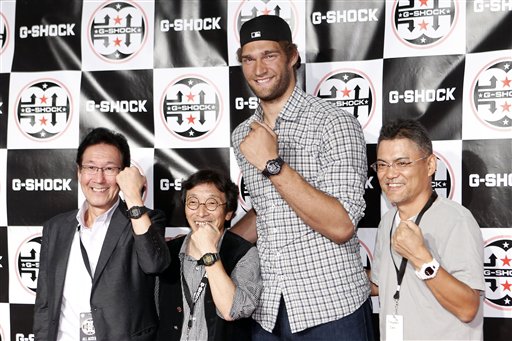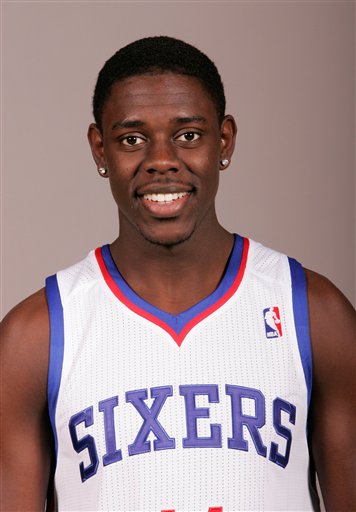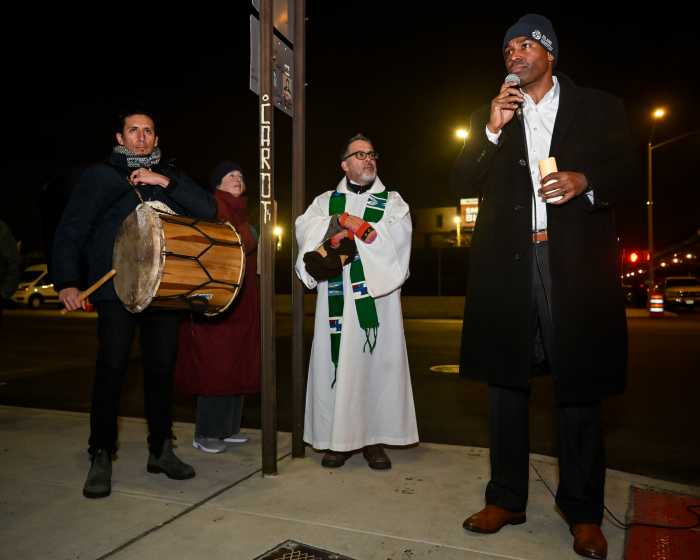Most of the Nets’ roster is filled out at this point, and they’re looking good: five above-average-to-great starters, solid scorers & rebounders off the bench, and a team that Brooklyn can be proud of immediately. To most fans, there’s just one gaping hole, sitting on the bench behind Brook Lopez. The Nets lack a traditional backup center, and had set their sights on Nazr Mohammad until he signed with the Chicago Bulls today. It’s been speculated that the Nets complete the imperative task of signing a backup C by signing one of the illustrious candidates remaining, a list headlined by Hamed Haddadi, Kyrylo Fesenko, and Darko Milicic.
This to me reeks of an archaic, pointless model of team-building. Milicic, despite his status as “drafted before Dwyane Wade and Carmelo Anthony,” is a notoriously bad basketball player, with metrics ranging somewhere from “worse than” to “similar to” Johan Petro’s this past season. Fesenko played all of three games last season, and Haddadi has averaged a glorious six minutes per game and 7.3 fouls per 36 minutes in four years in Memphis. Milicic’s rebound rate in his three years in Minnesota was around 12%, worse than Brook Lopez’s career number and well below Kris Humphries, currently next in line to play the majority of “biggest guy on the court” minutes. In fact, as I’ve noted before, Humphries’s PER in 2011-12 when playing the traditional center’s minutes was a herculean 25.4. While that’s overstated because he played to specific matchups, that’s precisely my point.
This isn’t solely Milicician issue. Beckley Mason and Rob Mahoney wrote about certain aspects of the “positional revolution.” Though both make different and at times competing points about the way we view basketball, the point remains: these men aren’t typecast point guards or centers, they’re basketball players. Fesenko, Milicic, and Haddadi are all bad basketball players. Why waste a roster spot on a player who’s going to hurt your team in the name of “team-building”?
The Nets don’t “need” a seven-footer any more than Monta Ellis “needs” shots: they look good, you can sell it to the fans, and it only makes sense if you don’t pay attention to how it affects the team.
The idea that the Nets need someone tall just because he’s tall is a fool’s game. In a league of 450ish players, just 11 listed at seven feet or taller qualified for last season’s minutes leaderboard. The list is littered with duds and good-not-greats — it includes Byron Mullens, Robin Lopez, and yes, Johan Petro. The Nets may very well sign someone to fit their “tall” budget to fill out the back of their roster, and at the veteran’s minimum, it’s not an enormous commitment. But I worry that a backwards vision of traditional models may lead the Nets to play a worse player more.
Size matters in basketball — as it always has — but size doesn’t make you good. Being good at basketball makes you good. With no one left that’s good at basketball, why force your own hand to appease poorly constructed tradition?












